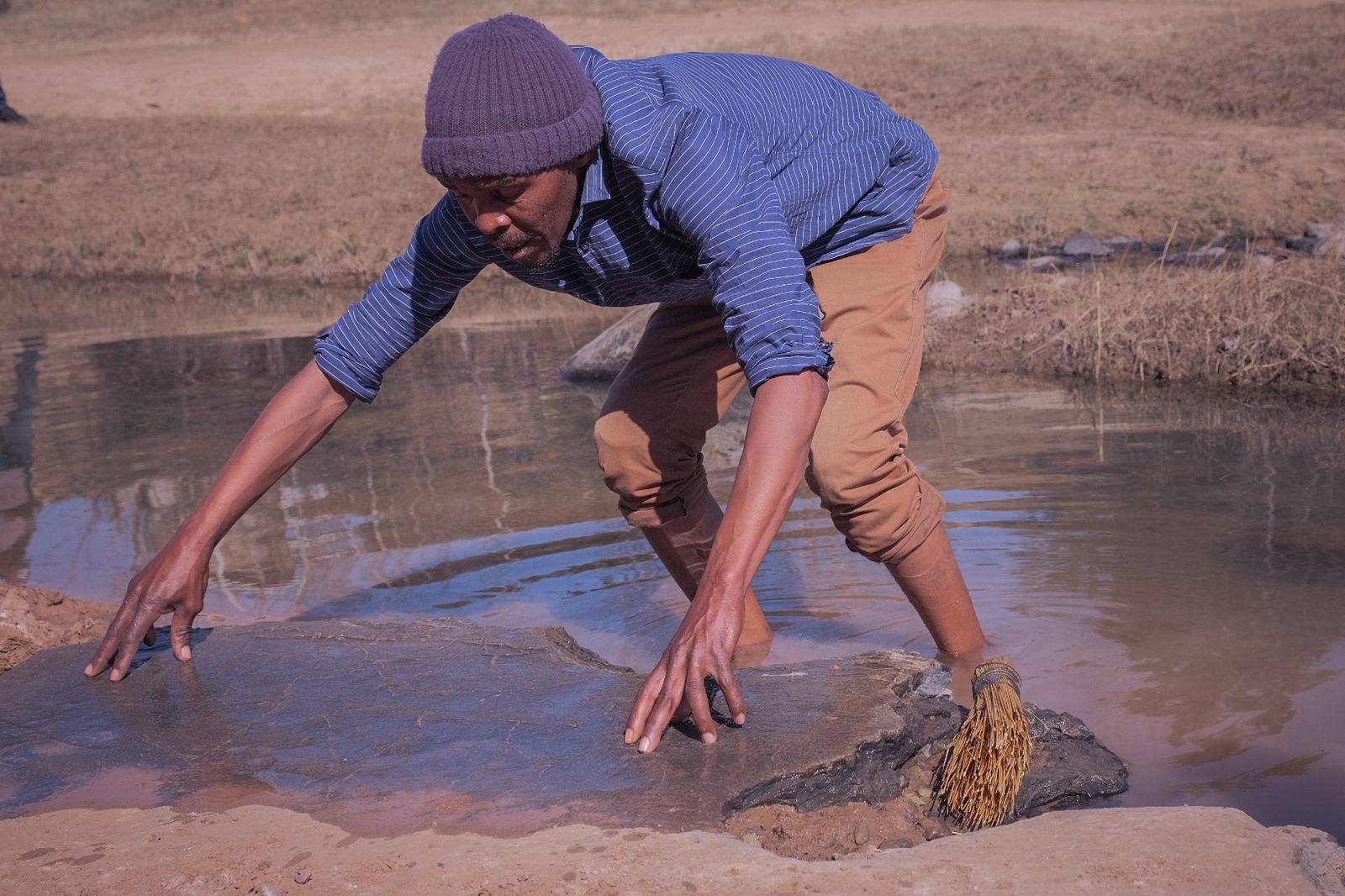Lesotho is a land-locked country surrounded by South Africa and is central within the Maloti Drakensberg Transfrontier Conservation Area (TFCA). The are is vast, covering almost 15 000 km² of what could become Southern Africa’s cultural, heritage and adventure playground. There are mountains to hike, hillsides to ski down, different biomes to discover and an incredible biodiversity to explore. There are communities, with their rich culture and traditions, to visit, stories to be told and meals to be shared. There is history to be retold and treasures to be uncovered – including dinosaur footprints!
Walking along the Subeng River with local guide and budding palaeontologist Tsebanang Makibi, the life and giant strides of the three-toed Lesothosaurus came to life. Wading through the shallow water with small grass broom in hand Tsebanang swished away the sediment for us to get a glance of the indentations of the footprints of the Lesothosaurus, so named by paleontologist Peter Galton in 1978, the name meaning ‘lizard from Lesotho’.
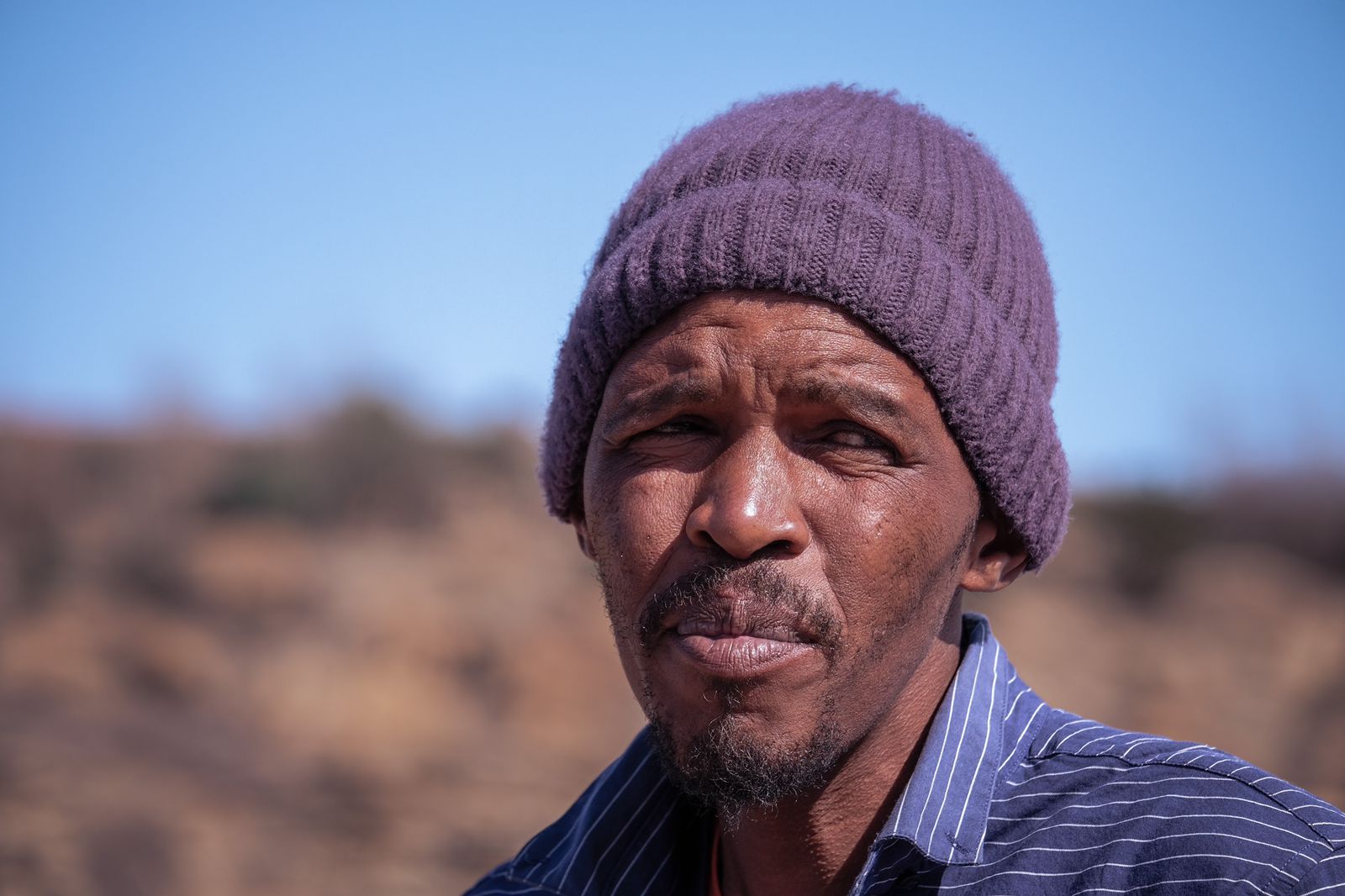
Taking giant strides he demonstrated how the large bird-like dinosaur would have run across the stream, his enthusiasm for dinosaurs clearly evident. He told us that he has been a guide at Subeng Dinosaur Footprints for 17 years but has had an interest in them for at least 42 years – as a boy he thought they were elephant footprints.
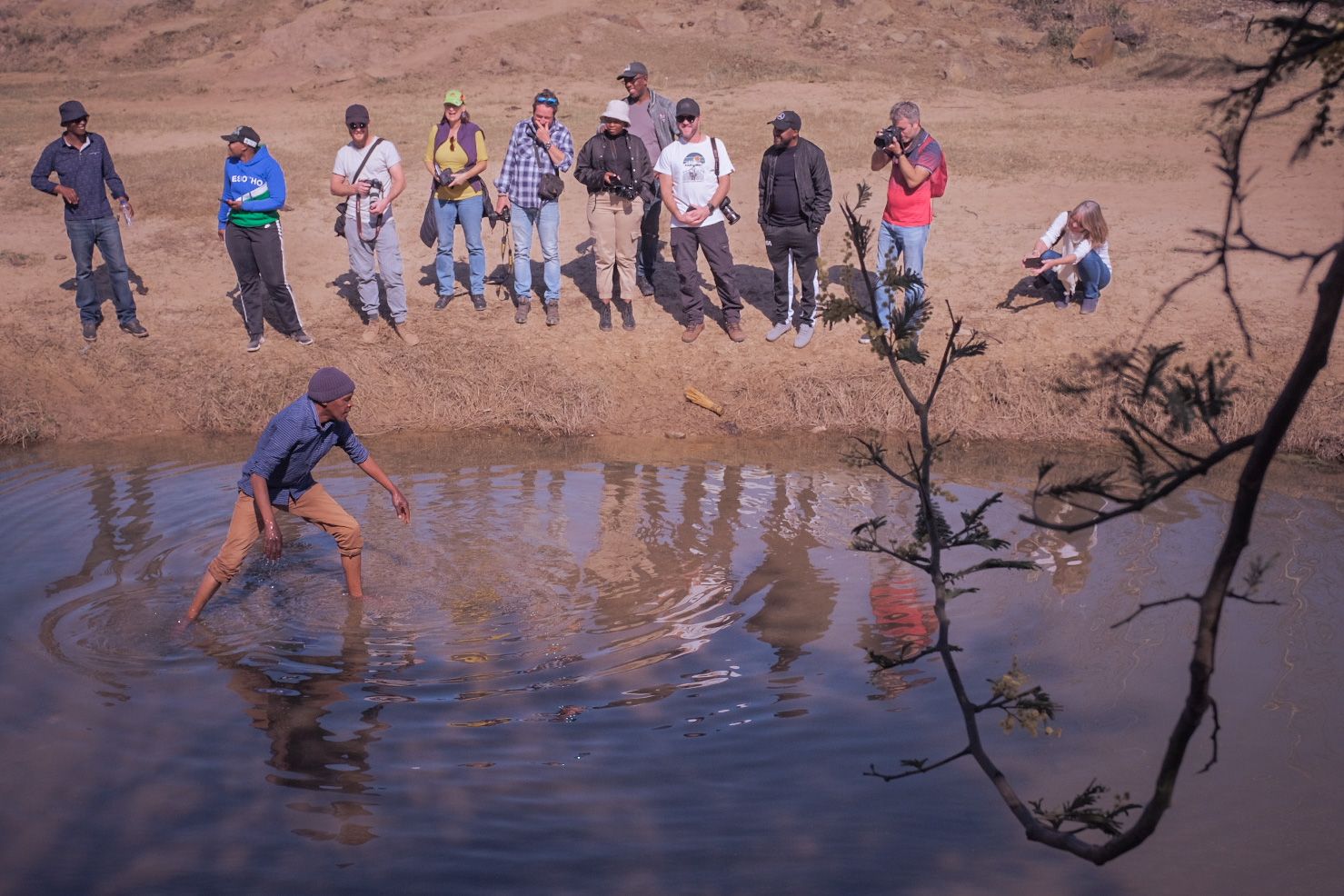
There are fossilized footprints from at least three species of dinosaurs, possibly more – we see several preserved tracks, some showing five toes on their feet, while others three. The first were identified as dinosaur tracks in 1955. Footprints from at least three species of dinosaurs, possibly more, can be found at this site. In the preserved tracks, you can see that some had five toes on their feet, while others had three. Tsebanang tells us that this site, which is protected by the local community, has been visited and studied by several palaeontologists from both South African and international universities, but it was Prof E. M Bordy from UCT that sparked his desire to learn more.
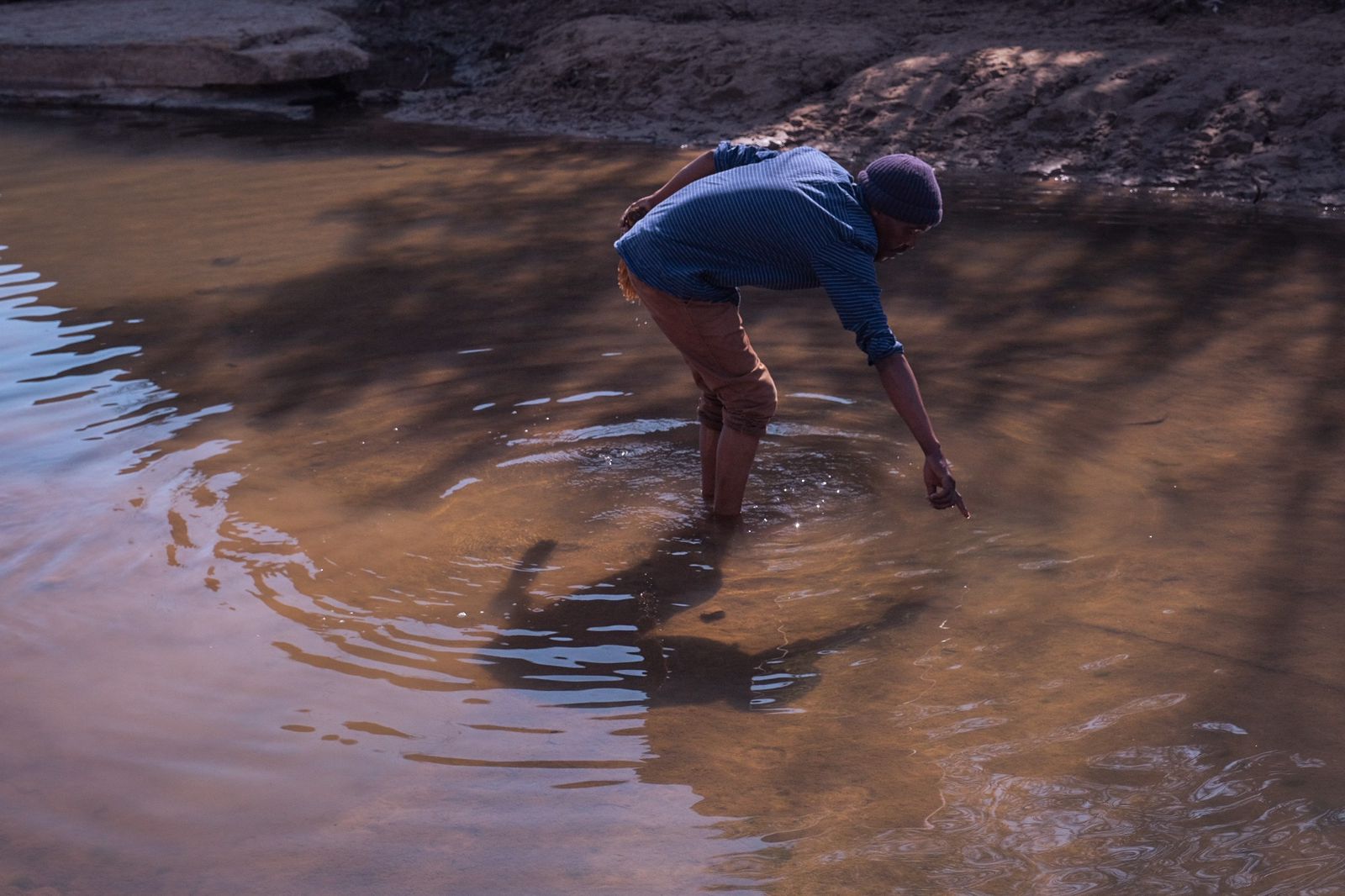
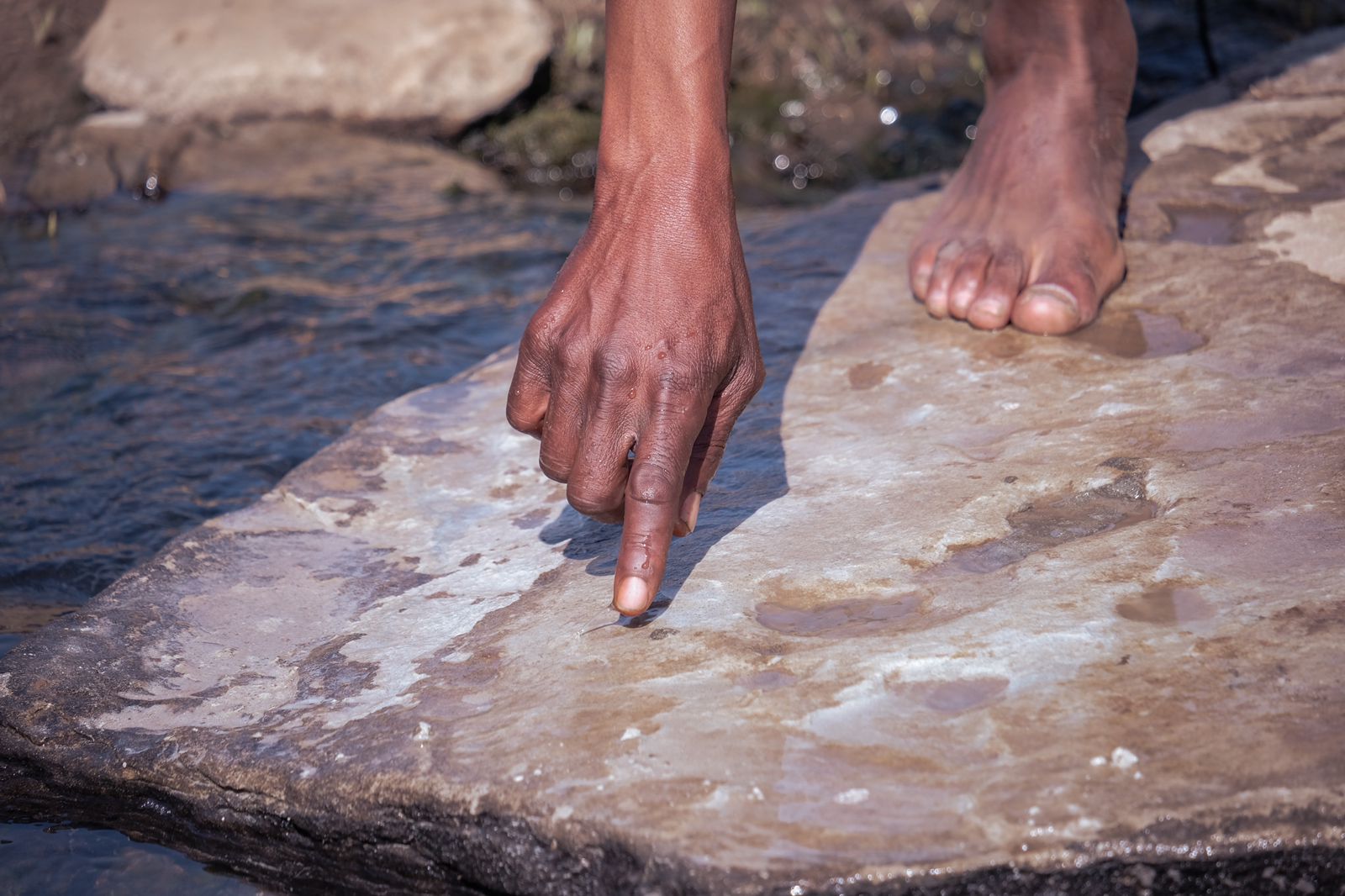
We see the fossilised remains of a fish, fossilised worm trails and evidence of mud cracks on slabs of rock in the riverbed and even what could be the footprints of a Massospondylus in the stream. Winter is the best time to visit as the heavy summer rains often obscure the footprints.
A herdsman follows his livestock – sheep, cattle and a goat with a tinkling of bell… the melody of rural Lesotho. There is so much to love about this wonderful country!!
Words Tessa Buhrmann

